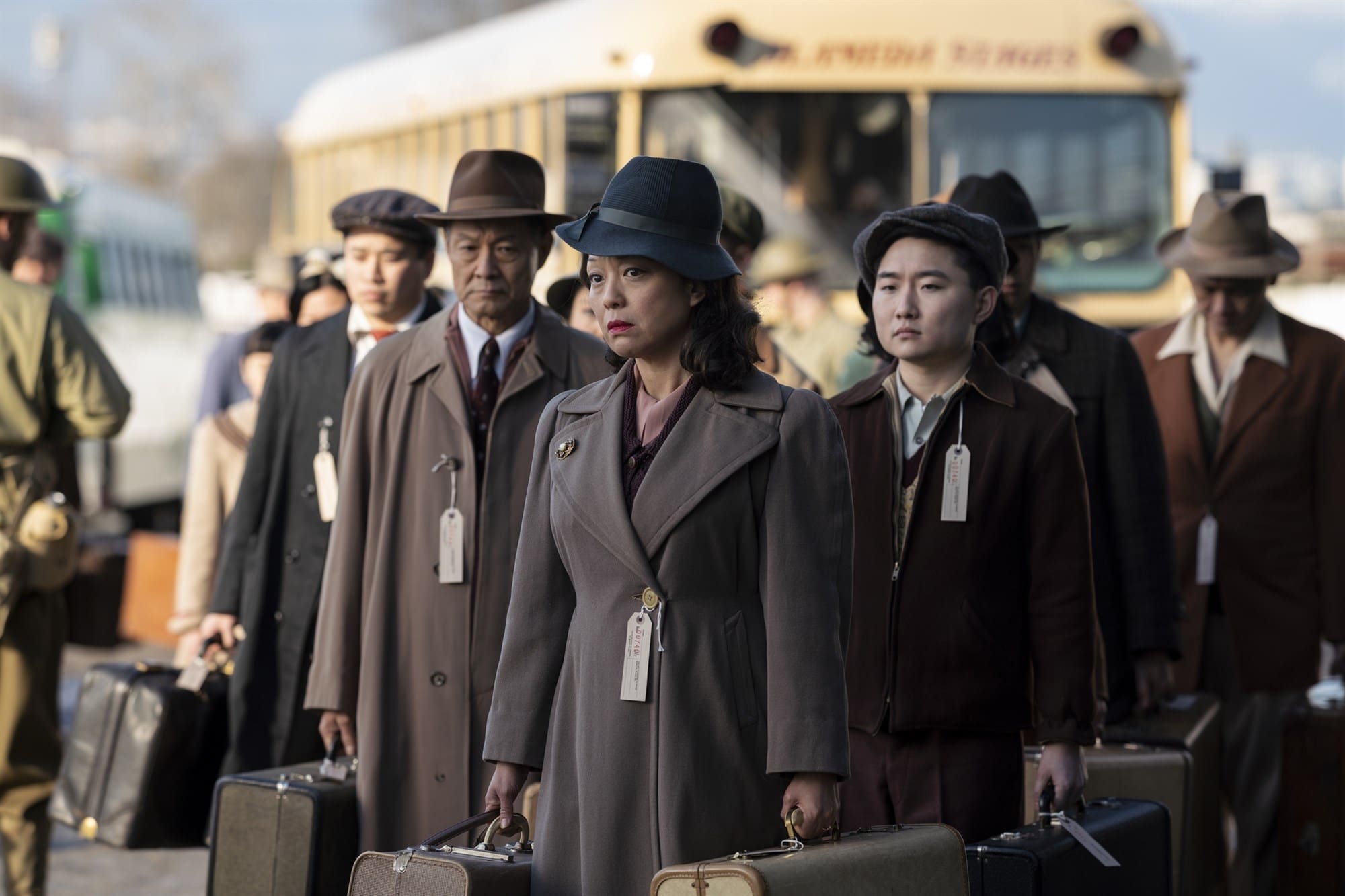
Written by Tom Moore
AMC brought a new sense of horror with the premiere of its anthology horror series, The Terror, back in 2018. Now, as they drift away from the frigid tale of the HMS Erebus and the HMS Terror, the series’ second season delves deep into something more unique and quite possibly even more terrifying.
The new season, The Terror: Infamy, takes viewers back to the middle of WWII to focus on how a group of Japanese-Americans faced discrimination in the wake of Pearl Harbor and begin to face supernatural horrors of their own. The premiere episode mostly spends time with our series lead Chester Nakayama (Derek Mio), a photographer, and his immigrant parents as they live on Terminal Island, just between Los Angeles and Long Beach, California. Right away, we can see the difference in mentality and culture between Chester and his father, Henry (Shingo Usami). Though the community they live in is mostly made up of other Japanese people, they are constantly looked down upon and mistreated by many of the White Americans around them.
While Henry might be fine living like this and take everything on the chin, Chester sees things differently and there’s a great debate between the two that stems from their different cultural upbringings. Their different thoughts on what it means to be a man and about the world around them is an interesting conflict and says a lot about the world they live in. While Chester implores his father to take action against those who have wrong him and has aspirations to run away with the girl he loves, Luz (Cristina Rodlo), and start a new life, there’s a deep ceded fear that can be felt from Henry.
From the “Rosie the Riveter” styled poster telling everyone that “Loose Talk Can Kill” to the way Henry shudders in fear at the mere mention of Stan possibly claiming that he’s a spy, there’s an understandable fear that can be felt within the camp that Chester doesn’t fully understand. I’m really interested in seeing how these characters change once their community becomes captive inside of the internment camps and as this supernatural presence gains a tighter grip on the community.
It’s also worth noting that George Takei’s character, Yamato-san, leaves a good impression, even for having a small part in the premiere, and I’m interested to see how strong of a part he plays with the internment camps – especially considering Takei’s past and influence on the show. The story Yamato tell Chester the story of how he became known for boxing tuna was a very charming way of introducing him and just seeing Takei here is just pleasant.
With the episode’s finale sparking the start of the community being forced into internment camps and the previews for the rest of the season showing that Yamato will play a part in delving into those terrors, it’ll be interesting to see more of Takei in the rest of the series. Having Takei be a part of this story is actually pretty important since he had actually lived in internment camps as a young boy. He’s also been cited to be helping the producers of the show create an accurate representation of the historical events and story that can already be felt here. Having this desire for accuracy is really great to see as life in Japanese internment camps is rarely, if ever, touched upon in media and even just having more Japanese representation and stories on-screen is something that’s always cool to see and what makes Infamy special.
It’s even nice to see that the Japanese influence has blended into the series’ supernatural presence and, even though we don’t see much here, the dark and mysterious presence it leaves definitely has my interest. Personally, the episode was a little light on scares for me, but it made it up in creepy imagery, atmosphere, and tone. Obviously seeing the horrifying image of Hideo (Eiji Inoue) becoming blind is just plain disturbing and the opening has a bone-chilling tone to it that’s hard to forget.
The creepiest thing to come out of Infamy, thus far, must be Yuko (Kiki Sukezane). From the emptiness of her room, except for the daunting masks hung on her wall to the creepily calm presence she has, you can tell that there’s something very sinister about her. Even when she tells Chester that he’s just “a sparrow in a swallow’s nest,” it perfectly symbolizes his communities place in America, especially with the events of Pearl Harbor just around the corner and creates a creepy atmosphere around her character.
Things are only made even more horrifying with the final scene showing that there’s something much eviler behind her innocent face. There’re already some elements of movies like The Grudge that can be felt with The Terror: Infamy and with Chester being a photographer, hopefully there will even be some vibes of Fatal Frame, for all of you gamers out there, that the series can delve into.
It’s tough to say if the premiere of The Terror: Infamy fully shows if the series can be as infamous as the events it’s covering since it doesn’t go into much, but there’s definitely enough here that makes it more than worth the watch. It’s a story and perspective that’s never seen and the slow-burning horror, both supernatural and real, is something that can’t be missed.

